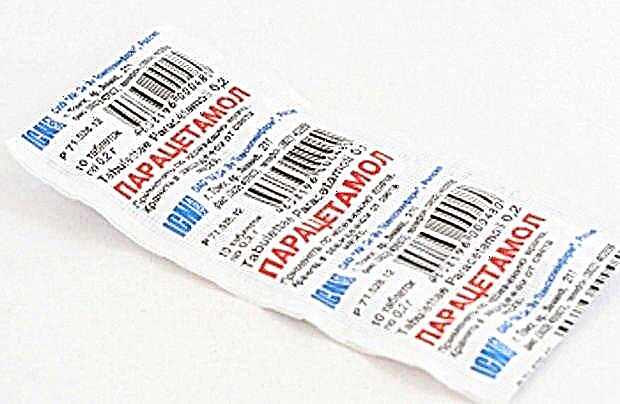If the baby is too moody and you notice a white coating in the baby's mouth, it could be a fungal infection known as thrush. You cannot even imagine the discomfort your little one is experiencing.
What does thrush look like in newborns and how to treat thrush in children?
Thrush in the mouth of an infant is a type of fungal infection that usually appears as irregular white patches or ulcers that cover the gums, palate, and tongue of the baby.
Moodiness during feeding (the baby starts to suckle, then turns away from pain) can be another sign of thrush.
Although it is a rather “mild” infection, thrush can be uncomfortable and can even hurt the baby and mother if she is breastfeeding and the baby passes the infection on to her.
Causes of thrush in the oral cavity of a child
Thrush in children in the mouth occurs when the Candida albicans fungus gets out of control and begins to grow excessively. Typically, the immune system uses good microorganisms to control candida and other bad microorganisms. However, when this balance is disturbed, harmful bacteria and fungi begin to multiply. This leads to the development and manifestation of infection.
Oral thrush is a common disease in newborn babies. The infection is also called candidiasis, but this term is usually used to describe the appearance of candida albicans in adults.
 Although a fungal infection known as candidiasis causes problems in a baby's mouth, it can start in the birth canal, and this is where the baby gets infected during childbirth.
Although a fungal infection known as candidiasis causes problems in a baby's mouth, it can start in the birth canal, and this is where the baby gets infected during childbirth.
Sandida albicans is an organism that usually lives in the mouth or vagina and is most often inhibited by other microorganisms.
But if you get sick, start using antibiotics, or undergo hormonal changes (such as during pregnancy), the balance may be imbalanced, allowing the fungus to grow and cause symptoms of infection.
When treating vaginal candidiasis during pregnancy, doctors recommend using natamycin-based suppositories for thrush, since it acts locally and does not harm the fetus.
Since thrush usually occurs in newborns in the mouth, it is most common in babies under 2 months of age.
Older children can also develop thrush if they take antibiotics to treat another infection that kills the “good” bacteria that keep the fungus in check.
Other causes of thrush
- thrush in a child's mouth can also develop if the mother's nipples do not completely dry out after feeding, and fungi grow and cause an infection;
- unfortunately, premature babies have a less developed immune system, and therefore they are more prone to the appearance of thrush;
- pacifiers or bottles can also cause your baby's mouth to be excessively wet, which provides an ideal environment for fungal growth.
- unhygienic conditions can cause infection. The mother should clean the baby's mouth with a disposable cloth or a clean, damp finger;
- Oral thrush is common in children with diabetes due to high sugar levels in the body;
- children with immunosuppressed children often have oral candidiasis. Many types of worms in children reduce the protective functions of the body.
Symptoms
In the initial stages, thrush in the child's tongue may not show any signs. But the fungus continues to grow and symptoms begin to develop.
 Signs of thrush can occur suddenly:
Signs of thrush can occur suddenly:
- The first sign is that the baby is restless, especially when feeding, as his mouth hurts.
- Oral candidiasis manifests itself on the tongue of the baby in the form of white spots, as well as on the palate, gums and inside the cheeks. If there is inflammation around the spots, they will resemble ulcers.
Unlike milk residues, stains will not wear off.
Sores in the mouth are difficult to get rid of, especially in babies. The lesions begin to spread and the child develops pain associated with the development of the lesion. The corners of the lips when opening the mouth can crack, which will cause even more discomfort.
If an older child or adult has thrush in the mouth or sores similar to those of thrush, this could be a sign of another illness, so see your doctor.
Other signs and symptoms of thrush in infants
Other manifestations should also be highlighted:
- whitish gloss of saliva;
- rejection of the breast;
- clicking sounds during feeding;
- insufficient weight gain;
- red rash in the diaper area;
- some babies may salivate more than usual.
Diagnostics
If the doctor has reason to believe that the infant has thrush, he may send a sample (swab) from the child's tongue to the laboratory for analysis and confirmation. Laboratory testing of the sample will help rule out other diseases that cause complications such as thrush.
Diagnosis in infants is usually clinical. This means that doctors are usually only able to diagnose an infection on examination.
The doctor may take a throat swab for flora, send for endoscopic examination, and swallow barium with further x-rays to diagnose a thrush infection that may have progressed to this degree.
When a baby's thrush is diagnosed, the baby and mother will need to be treated at the same time.
Coordinating the care of the mother and child helps to avoid the risk of transmission from mother to infant and vice versa.
Treatment of thrush in children
Consult your pediatrician before treating infant thrush using any home remedies.
The specialist will confirm the diagnosis and give medical advice on how to treat thrush in newborns. While many home treatments for thrush seem safe, keep in mind that your baby's gut and immune system are still quite immature.
Treating thrush in infants with natural remedies

1. Give your child acidophilus. Acidophilus is a powdered form of bacteria found in healthy intestines. Acidophilus will reduce the growth of fungi.
- make a mass by combining acidophilus powder with water or milk;
- rub this mass into the affected areas of the child's mouth once a day until the thrush disappears.
You can also add a teaspoon of acidophilus powder to formula or to breast milk if your baby is drinking from a bottle.
2. Try yogurt. If the child is ready to eat yogurt, the doctor may recommend adding unsweetened, lactobacilli-rich yogurt to the child's diet. It works in a similar way to acidophilus, balancing fungal populations in the baby's stomach and intestines.
3. Use grapefruit seed extract. This product, when mixed with water and used daily, will help relieve symptoms of the disease.
- mix 10 drops of the extract with 30 ml of water;
- use a clean cotton swab to apply the mixture to the affected areas of the child's mouth once an hour throughout the entire waking time;
- if the condition does not improve significantly by the second day of treatment, you can try increasing the concentration of the extract mixture by dissolving 15 to 20 drops in 30 ml of water instead of the original 10 drops.
4. Use pure coconut oil. It contains caprylic acid, which helps fight yeast infections that cause thrush. Use a clean cotton swab to apply coconut oil to the affected area.
Check with your doctor before using coconut oil as children may have allergies.
5. Make a baking soda solution. The soda solution will help treat thrush in the affected areas and can be used both on the mother's nipples, if she is breastfeeding, and directly in the baby's mouth.
- add a teaspoon of baking soda to 240 ml of water;
- apply the solution with a clean cotton swab.
6. Try a salt water solution. Add half a teaspoon of salt to a cup of warm water. Then apply the solution to the affected area using a clean cotton swab.
Treatment of thrush with medications
1. Miconazole - a common option for the treatment of thrush in pediatricians. Miconazole comes in the form of a medicated gel that must be applied to the affected parts of the child's mouth.
Apply a quarter teaspoon of Miconazole to the affected areas of the baby's cavity, use it up to four times a day. Use a clean finger or clean cotton swab to apply Miconazole directly to the blooming spots.
Continue treatment with Miconazole until your pediatrician says you have completely recovered. Miconazole is not recommended for children under six months of age.
2. Nystatin often prescribed instead of Miconazole. This is a thick liquid preparation that is applied to the affected area in the child's mouth with a pipette or a clean cotton swab covered with a product.

Shake the bottle of Nystatin before each use.
Follow the directions that come with the medicine. Apply the liquid to the white spots in the baby's mouth. Wait five to ten minutes after applying Nystatin before feeding.
Use Nystatin no more than four times a day. Continue to apply the medication for another five days after the yeast infection has cleared, as candidiasis may recur soon after treatment.
3. Gentian violet. If the child is unlucky with Miconazole or Nystatin, the pediatrician may recommend trying Gentian violet. It is a topical antifungal solution.
Apply Gentian violet to affected areas using a clean cotton swab. Apply the medicine two to three times a day for at least three days.
4. Fluconazole. If other methods do not work, the doctor may prescribe the antifungal drug Fluconazole, which the child takes orally once a day for 7 to 14 days. This will slow down the growth of the fungi that cause the infection.
Child care for thrush
While thrush can be painful in a toddler, it is not particularly harmful to a baby. Some cases of thrush go away without treatment after one to two weeks. More severe cases can take up to eight weeks to clear up without treatment, while pediatrician-prescribed remedies will heal tongue and mouth stains in as little as four to five days.
However, sometimes thrush causes complications, which indicates a more serious problem. Immediately consult a doctor if your child has:
- fever;
- any bleeding;
- dehydration or the baby drinks less than usual;
- difficulty breathing and swallowing;
- there are any other complications that you find troubling.
Sucking on a bottle or pacifier for a long time can irritate the baby's mouth. Limit bottle sucking time to 20 minutes per feed.
In severe cases of thrush, some babies are unable to use the bottle due to sore mouth. If this happens, you may need to replace the bottle with a spoon or syringe.
Clean nipples, bottles, and pacifiers with hot water.
If a nursing mother develops thrush from taking antibiotics or steroids, she may need to stop taking these medications or reduce the dosage until the thrush goes away. However, this should only be done if stopping or reducing the dose of antibiotics or steroids does not cause medical complications for the mother.
Breastfeeding should not be interrupted if you or your baby is diagnosed with candidiasis. But the painful condition can become excruciating. This is another reason why fast treatment is required.
Even if the baby is irritated while feeding, continue offering the breast or bottle if you are expressing or feeding formula. Once treatment begins and symptoms begin to subside, the baby will return to normal eating habits.



